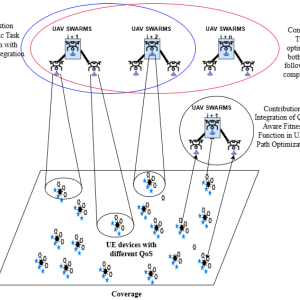Beyond the Osprey, the vision extends to the development of a revolutionary DARPA High-Speed Vertical Takeoff X-Plane, promising to redefine the possibilities of aerial mobility.
Step into the forefront of aerospace evolution as we unveil a revolutionary chapter in vertical takeoff. In this era of progress, delve into the avant-garde breakthroughs transforming the fundamental nature of vertical ascent, guiding us into an uncharted realm where innovation in aerospace reaches unparalleled heights. Join us on this captivating journey as we uncover extraordinary accomplishments and pioneering solutions, marking the emergence of a new era in the annals of aviation history.

Unveiling DARPA’s Ambitious Vision
DARPA, renowned for its trailblazing contributions to technological innovation, has set its sights on transcending the existing paradigms of vertical takeoff. The recently revealed project aims to go beyond the capabilities of the Osprey, a notable aircraft in its own right, by introducing a new era of high-speed vertical takeoff capabilities. This ambitious venture represents a testament to DARPA’s commitment to pushing the boundaries of what is achievable in the aerospace domain.
The Need for High-Speed Vertical Takeoff X-Plane
In the ever-evolving landscape of defence and aerospace, the need for rapid and versatile vertical takeoff capabilities has become increasingly pronounced. DARPA recognizes the strategic significance of such capabilities, envisioning a future where military and emergency response operations can leverage the advantages of high-speed vertical takeoff to enhance agility and responsiveness.
Technological Ingenuity: High-Speed Vertical Takeoff X-Plane
1. Velocity Redefined: High-Speed Propulsion Systems
At the core of DARPA’s X-Plane project is the integration of cutting-edge propulsion systems engineered for unparalleled velocity. The aircraft aims to achieve speeds that transcend conventional expectations, introducing a new benchmark for high-speed vertical takeoff capabilities.
2. Aerodynamic Mastery: Streamlined Design for Efficiency
Crafting an aircraft that defies gravitational constraints requires meticulous attention to aerodynamics. DARPA’s X-Plane boasts a streamlined design that optimizes efficiency during takeoff, ensuring a seamless transition to high-speed flight without compromising stability.
3. Advanced Materials: The Building Blocks of Tomorrow’s Aviation
Materials science plays a pivotal role in the development of the X-Plane. DARPA’s commitment to innovation is evident in the incorporation of advanced materials that not only enhance structural integrity but also contribute to the overall lightweight design, a crucial factor in achieving unprecedented speeds.
Strategic Implications for Defense and Beyond
1. Tactical Advantage on the Battlefield
The implications of DARPA’s High-Speed Vertical Takeoff X-Plane extend far beyond the realms of conventional aviation. On the battlefield, the ability to execute rapid vertical takeoffs empowers military forces with a strategic edge, enabling swift deployment and manoeuvrability in dynamic and challenging environments.
2. Humanitarian Aid and Disaster Response
In the realm of humanitarian aid and disaster response, time is of the essence. The X-Plane’s high-speed vertical takeoff capabilities hold the potential to revolutionize emergency response efforts, facilitating the rapid transport of critical supplies and personnel to affected areas with unprecedented efficiency.
Challenges and Future Prospects
1. Engineering Marvels and Technical Challenges
While DARPA’s vision for the High-Speed Vertical Takeoff X-Plane is undeniably groundbreaking, it is not without its set of engineering challenges. Overcoming these hurdles demands a convergence of expertise from various aerospace disciplines, underscoring the complexity of realizing such an ambitious project.
2. Collaborative Innovation: A Path Forward
As DARPA embarks on this journey towards redefining vertical takeoff capabilities, collaboration emerges as a linchpin for success. The integration of diverse perspectives and expertise from industry leaders, research institutions, and technological pioneers will be instrumental in overcoming challenges and propelling the project towards fruition.
Conclusion: Paving the Way for a New Era in High-Speed Vertical Takeoff X-Plane
In conclusion, DARPA’s pursuit of a High-Speed Vertical Takeoff X-Plane stands as a testament to the relentless spirit of innovation in the defence and aerospace industry. As we anticipate the unfolding of this visionary project, it is evident that the landscape of vertical takeoff capabilities is on the brink of a transformative shift. The implications for military operations, emergency response, and the broader spectrum of aviation are poised to be profound, setting the stage for a new era in aerospace technology.










